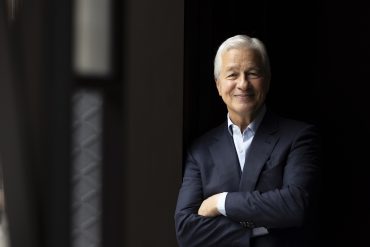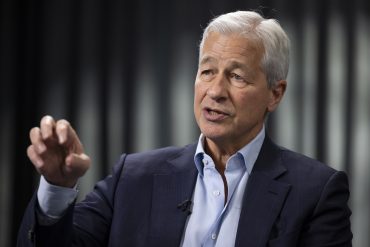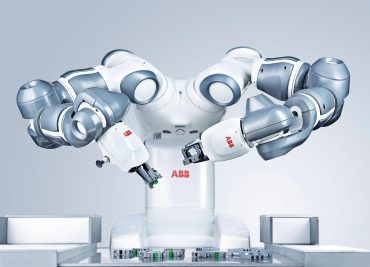
- Artificial Intelligence
- Strategic Investments
- Tech Investment
JPMorgan Bets $1.5T on Rebuilding American Industrial Power
5 minute read

Jamie Dimon is placing a trillion-dollar bet that American industrial power is the next growth frontier
What You Need to Know
- JPMorgan Chase just committed $10 billion in direct investments and $1.5 trillion in total financing over the next decade to rebuild America’s technological edge—targeting 27 sectors from rare earth mining to quantum computers to hypersonic weapons.
- Defense stocks jumped 2-5% on the announcement. The bank sees a $2 trillion global market taking shape by 2030 in these exact industries, and it’s positioning to capture returns from structural transformation rather than cyclical bets.
- CEO Jamie Dimon’s assessment: America got complacent while China built integrated supply chains and manufacturing dominance. The country that controls critical materials, chips, and advanced manufacturing controls its own fate.
The Wake-Up Call
On October 13, 2025, JPMorgan Chase announced what may be the largest corporate commitment to national security in modern history. The Security and Resiliency Initiative puts $10 billion in direct equity on the line—venture capital, growth investments, the works—backed by $1.5 trillion in financing, research, and advisory muscle over ten years.
This comes as the U.S. imports 80% of its rare earth elements from China. As American pharmaceutical companies source precursor chemicals from factories they’ve never inspected overseas. As the country that invented semiconductors now struggles to manufacture them at scale. Jamie Dimon, managing over $4 trillion in assets as CEO of the world’s largest bank, has been warning about these gaps for years. Now he’s writing checks to fill them.
The geopolitical backdrop matters. China tightened export controls on rare earths. U.S. tariffs on Chinese goods average 25% on key imports. The supply chain vulnerabilities that were theoretical concerns in 2020 became very real disruptions that cost real money. Dimon’s pitch is straightforward: America needs to make things again, and the companies that help make that happen will grow fast.
Where the Money Goes
JPMorgan organized this around four pillars, each addressing a specific weak point in American infrastructure:
- Supply Chain and Advanced Manufacturing – The U.S. doesn’t mine enough rare earths, doesn’t make enough pharmaceutical ingredients, and doesn’t build enough ships. JPMorgan is funding the entire value chain—extraction, processing, automation through robotics, and the factories that turn raw materials into finished products. The goal is simple: reduce reliance on imports that can be cut off overnight.
- Defense and Aerospace – Drones, hypersonic missiles, space launch systems, secure 6G networks. The Pentagon’s research budget for fiscal 2025 reached $179 billion, with huge allocations for unmanned systems and propulsion. JPMorgan is matching that focus, putting capital into companies building the hardware that determines who wins the next generation of conflicts.
- Energy Independence – Battery storage that actually works at grid scale. Nuclear reactors that don’t take 20 years to approve. Distributed power systems that can’t be knocked out by a single attack. The U.S. energy market is projected to be worth $500 billion by 2030 as electrification accelerates. Someone has to build all that capacity.
- Frontier Technologies – AI and quantum computing sit at the center. JPMorgan already employs 2,000 AI specialists and spends $2 billion annually on these systems—and claims a 1:1 return on that investment. The global AI market is growing at 29% per year toward $1.77 trillion by 2032. Quantum is earlier stage but moving fast, with 2025 seeing a surge in funding that could push the market to $10 billion by 2045. JPMorgan is assembling an advisory council of technologists and policymakers to identify which companies are actually solving hard problems versus chasing hype.
The bank is hiring specialized bankers by the dozen, expanding its research team, and using its own AI tools to evaluate potential investments. This is due diligence at scale—leveraging the same systems JPMorgan uses internally to process trillions in daily transactions.
What Happened Next
Markets reacted immediately. CrowdStrike jumped 3.2%. MP Materials, a rare earth miner, has surged 160% year-to-date to over $78 per share. Lockheed Martin and Raytheon saw 2-4% gains. Investors recognize the signal: when the largest bank in America commits this kind of capital, other money follows.
Analysts predict valuations in these sectors could rise 15-20% over the next 18 months, particularly in hardware and AI infrastructure where venture funding has been scarce. JPMorgan processes $10 trillion in flows daily—its validation alone could pull $50-100 billion in syndicated investments from other institutions.
But risks exist. Escalating tensions with China could spike commodity prices 20-30%. Dimon himself has warned about inflation from geopolitical instability. Regulatory delays, permitting bottlenecks, and political fights over industrial policy could slow deployment. Still, for JPMorgan, the math works: lending to resilient sectors in a fragmenting world should generate better returns than chasing yield in overheated markets.
Social media lit up with reactions. Startup founders in quantum and robotics called it “unprecedented access to capital.” One investor described it as a “catalyst for reshoring” that gives private companies the firepower to compete with subsidized Chinese manufacturers. The phrase “seismic shift” appeared repeatedly.

Why This Matters Now
Dimon’s career has been defined by seeing around corners—steering JPMorgan through 2008 when rivals collapsed, building AI capabilities while other banks debated whether technology mattered. This initiative reflects the same instinct: national security is becoming a trillion-dollar growth sector, and getting in early means capturing returns that come from structural transformation rather than cyclical swings.
Consider the data. Companies that aggressively adopt AI see revenue per employee grow three times faster and wages increase twice as quickly. Quantum computing, still mostly in labs, could generate 10x returns for early backers once error-corrected systems become practical later this decade. Cybersecurity, semiconductors, and defense contractors all face surging demand as governments wake up to dependencies they can’t afford.
The winners are obvious: startups gain access to capital that was unavailable 24 months ago, and established players like Boeing get advisory services and lending capacity that smaller banks can’t match. JPMorgan is also building a moat. In an industry that has lagged on technology adoption, the bank’s decade-long investment in AI—$2 billion annually since 2012—now gives it tools to evaluate national security investments with unusual precision.
There’s a political dimension too. Dimon has been unusually vocal about industrial policy, criticizing “virtue signaling” and calling for merit-based H-1B visa reforms to attract talent. This initiative puts money behind that rhetoric, advocating for policies that make domestic manufacturing viable while simultaneously funding the companies that benefit from those policies.
The Dimon Doctrine
“Our security is predicated on the strength and resiliency of America’s economy,” Dimon said in announcing the program. In May 2025, he was more direct: “America slept while China built.” His annual shareholder letters have consistently warned about supply chain vulnerabilities—from rare earths to penicillin—that reduce national resilience.
On social platforms, technologists praised the “powerful engine for leadership” that comes from linking Wall Street capital to strategic industries. Some skeptics questioned whether tariffs might distort economic viability or whether political considerations would override investment discipline. Dimon’s response has been consistent: focus on merit, remove regulatory barriers, and let capable companies compete.
Policymakers are paying attention. The fiscal 2025 National Defense Authorization Act includes major investments in AI and quantum that align with JPMorgan’s focus areas. The $1.8 billion allocated for audit automation signals government confidence in private sector innovation. This creates a feedback loop: government funding validates technologies, private capital scales them, and improved capabilities justify further public investment.
What Comes Next
JPMorgan’s Security and Resiliency Initiative marks a turning point. The $10 billion in direct equity and $1.5 trillion in total commitments set a new standard for how institutional capital engages with national strategy. By targeting sectors growing at 30%+ annually—AI heading toward $3.5 trillion by 2033, quantum expanding from a small base, defense tech riding government spending increases—the bank is positioning itself at the intersection of profit and geopolitical necessity.
This is calculated risk-taking. Dimon has built JPMorgan into a machine that can evaluate complex bets, deploy capital efficiently, and navigate regulatory environments. Applying that capability to national security infrastructure creates alignment between what’s good for the bank and what’s necessary for the country.
The next decade will test whether democracies can compete with state-directed economies in strategic technologies. China has spent years building integrated supply chains, subsidizing manufacturers, and protecting domestic industries. JPMorgan’s initiative suggests the American model—private capital making investment decisions, guided by profit incentives but aligned with national interests—can deliver speed and innovation that centralized planning can’t match.
For investors, this opens access to sectors that were previously hard to enter. For policymakers, it demonstrates private sector commitment to shared goals. For companies building the technologies that matter, it provides the capital runway needed to move from prototype to production.
The message is clear: the competition for technological supremacy will be won or lost in the next ten years, and the winners will be whoever can mobilize resources fastest. JPMorgan just committed $1.5 trillion to making sure America is in that fight.







